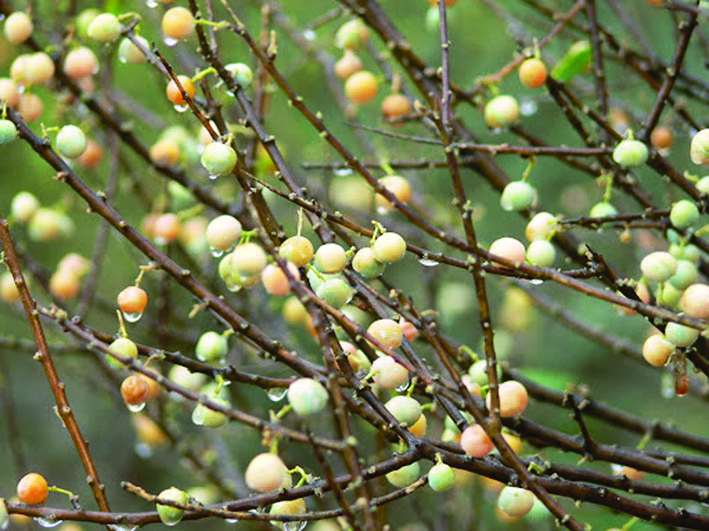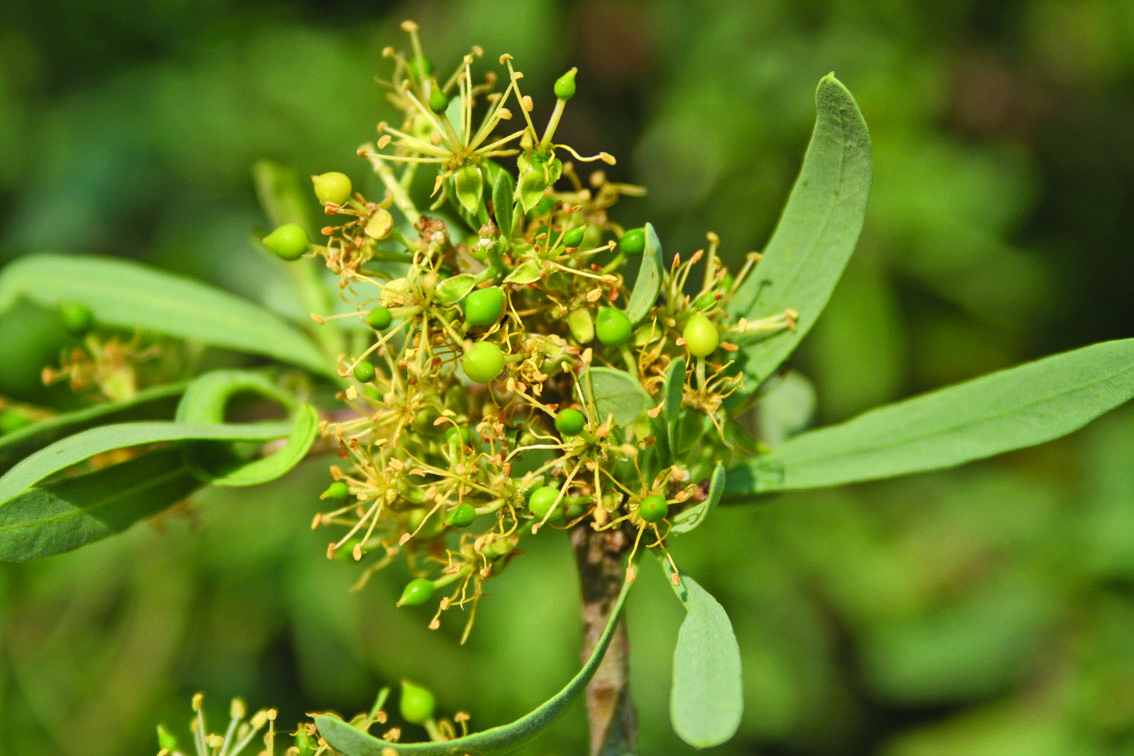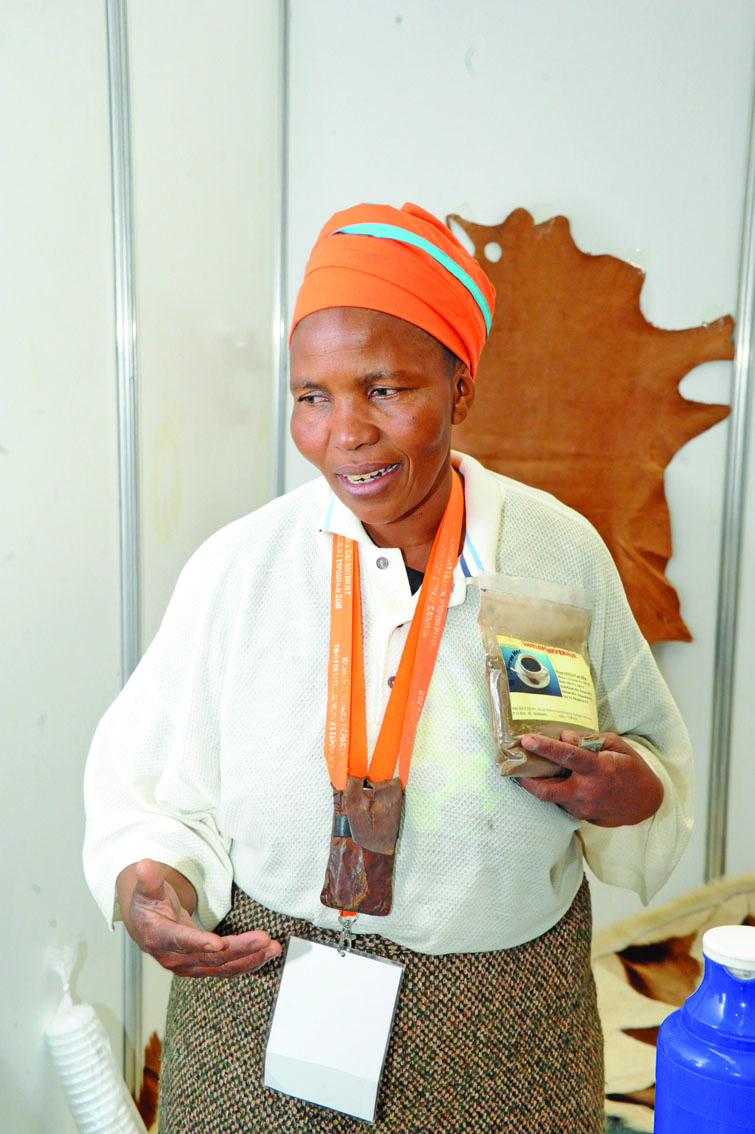Motlopi Coffee - \'Diamond\' In the Sand
Source : Kutlwano
Author : Ludo Chube
Location : Gaborone
Event : Interview
The Motlopi tree, which is said to have medicinal properties, is to the people of Kgalagadi what tswii is to people in the Ngamiland region. The residents have a high regard for the tree because of its healing powers. The roots of Motlopi are said to be richer and more succulent during the rainy season which makes the coffee richer and stronger. Research from online sources revealthat the scientific name for Motlopi, is Bosciaalbitrunca, and its common English name is Shepherd’s tree. Further, online literature claims that the Motlopi tree is commonly found on the banks of the Tlopi River, in the Limpopo area, South Africa.
However, Botswana also boasts a large population of the Motlopi tree in the Kgalagadi region and the inhabitants of the area reveal that they have been making motlopi coffee from time immemorial. South Africa on the other hand has not wasted any time branding and marketing motlopi coffee as their own invention and promotes it as one of their indigenous foods. In fact, an excerpt from a book titled Food Cuisine and Cultural Competency for culinary, hospitality and Nutrition professionals by Sari Edelstein (2011) makes reference to Motlopi coffee as being indigenous to South Africa. That said, motlopi coffee is made from the succulent root of the motlopi tree; however, there are more products that can be derived from the tree than just one. A 2007 BOPA article says some people talk glowingly about Motlopi’s edible fruits that can also be fermented to make juice known as khuki. Other people, reads the article, talk about its unusually sweet roots that are used to make indigenous sugar called kota. They add that coffee from Motlopi roots has healing powers including ability to heal the digestive system.
A local coffee maker, Dinah Botha of Kolonkwaneng village in the Kgalagadi District, is well established in her Motlopi coffee trade. During this year’s women’s expo, her stall was by far the busiest with throngs of curious customers stopping to get a taste of Motlopi coffee. “Motlopi coffee is natural and caffeine free. It is suitable for all ages and sells very well throughout the country,” she says in an interview with Kutlwano. Women are her main customers and “I hear that it’s very good for period pains and high blood pressure,” says the coffee maker. Botswana’s food worthiness oragnisation, National Food Technology Research Centre (NFTRC), has already done research on Motlopi and positively established its nutritional value.
According to the labelling on the packages, 100g of Motlopi coffee contains 11.6 grams of protein, 23.5 grams of crude fibre, 56.8 grams carbohydrates, and 1199.8 grams of energy. The coffee has very low fat content of one gram and, moreover, it is also caffeine free, which validates its healing and medicinal powers as professed by the Kgalagadi community. According to Botha, a perfectly brewed cup of Motlopi requires one to brew the coffee for a while to give it that perfect richness. Like a lot of people who are in the coffee-selling business, Botha says her coffee-making skills were inherited from her grandmother back in time when the now 46-year old coffee maker was just a young girl. “Motlopi o mpelege thata nako tsa leuba, fa go sena sukiri. Mme o ne a re tlhatlegela tee a ba a loka letswainyana le mashi, re bo re e nwa re kgona go ya sekolong ka dinao, dikhilomethara di le nne,” she says. She says she observed how it made her healthy, giving Motlopi all the credit. Botha recalls how even back in the days, white South Africans, who used to buy Motlopi coffee from her grandmother, gave it a thumbs-up, describing it as ‘godsend’. The coffee maker explains that Motlopi roots, from which the coffee is made, differ in size and taste. She says the bigger the root, the better the taste.
Her coffee, she says, travels as far as Maun and Gaborone as the market is responding positively. “Kofi e, e fokotsa madi a matona, e bile e itse go alaha ditlhabi tsa setswalo (This coffee is good for high blood pressure and cures period pains too), affirms Botha. Vivian Makuku, one of Botha’s stall crawlers, cannot agree more, as she says her BP is down because of the Motlopi coffee. She adds that she has in turn shared the coffee’s secrets with her friends and colleagues at work. According to Botha, the process of producing Motlopi coffee begins with finding the right root and chopping part of it. She does this carefully so that she does not to kill the tree altogether. Further, she points out that the roots are often too big and ideally long enough for the mother tree to be adversely affected. The next step, she says, is to peel off the brownish outer part of the root (makwati in vernacular), then cut the whitish inner part into several tiny pieces. She then grinds these tiny white particles into fine pulp, which she then leaves to dry over a period of two to three days. The dry mash is then boiled with a bit of oil over moderate heat. Oil is used to make the coffee smooth and moist. After that she allows it to cool off and to dry again before sieving it. The fine particles that remain are what will be your coffee, concludes the coffee maker.
Botha explains that making coffee is labour intensive. She says she uses public transport to transport her coffee around the country as per orders and requests. She admits that there are many of them in this trade in Tsabong but hers stands out because she now has a solid customer base and markets herself at every opportunity she gets. She says there are plenty Motlopi trees in the area, enough for every aspiring coffee maker. “I work with the forestry department so that I get the right information on issues of conservation,” she says, adding that the affected roots are said to grow again if covered with soil after cutting. With her coffee making business, Botha says she has been able to sufficiently take care of herself and the family. Though confident with her product, there is a lot of marketing to be done especially that NFTRC has given it a thumbs-up in terms of its nutritional value. ENDS
Teaser:
“Motlopi o mpelege thata nako tsa leuba, fa go sena sukiri. Mme o ne a re tlhatlegela tee a ba a loka letswainyana le mashi, re bo re e nwa re kgona go ya sekolong ka dinao, dikhilomethara di le nne.”















